Many people may not know that Lombardy is a land of important archaeological sites ranging from prehistory to the Middle Ages. Usually people do not visit the region to take a trip into archaeology, but what we want to propose here is, precisely, an unusual but not uninteresting (on the contrary: far from it!) itinerary among the archaeological emergencies of a region that is really very rich in them. We have therefore chosen ten archaeological areas and parks, all of which can be visited, in order to have a rather complete overview of the ancient history of the region, from the Alps to the Po Valley.
Brescia was one of the most important Roman cities in northern Italy: it was the Brixia of the Romans and was located along the Via Gallica, the road that connected the most important centers in the north of the peninsula. Given such an illustrious past, it is natural to expect that Brescia is home to the largest archaeological area in northern Italy, now managed by Brescia Musei: it is that of the Roman forum in Brescia. Located in the city’s historic center, it is gathered around the splendid Capitolium, the main temple of Roman Brescia, and dedicated to the “Capitoline Triad,” or the three main deities according to the Romans (Jupiter, Juno and Minerva). The Capitolium dates back to 73 AD and is one of the best-preserved temples in northern Italy, but it is not the only building of ancient Brixia that has survived to the present day: in the Brescian archaeological area it is in fact still possible to see the remains of the sanctuary from the Republican age, i.e., from the 1st century BC, the later Roman theater (from the 1st-3rd century AD), and a section of the decumanus maximus. It is also one of the oldest visitable archaeological areas in the country, since the Museo Patrio was opened here in 1830 with the aim of illustrating the history of Roman Brescia. The Roman forum area then saw the succession of medieval and Renaissance buildings placed along Via dei Musei, today’s street corresponding to the ancient decumanus.
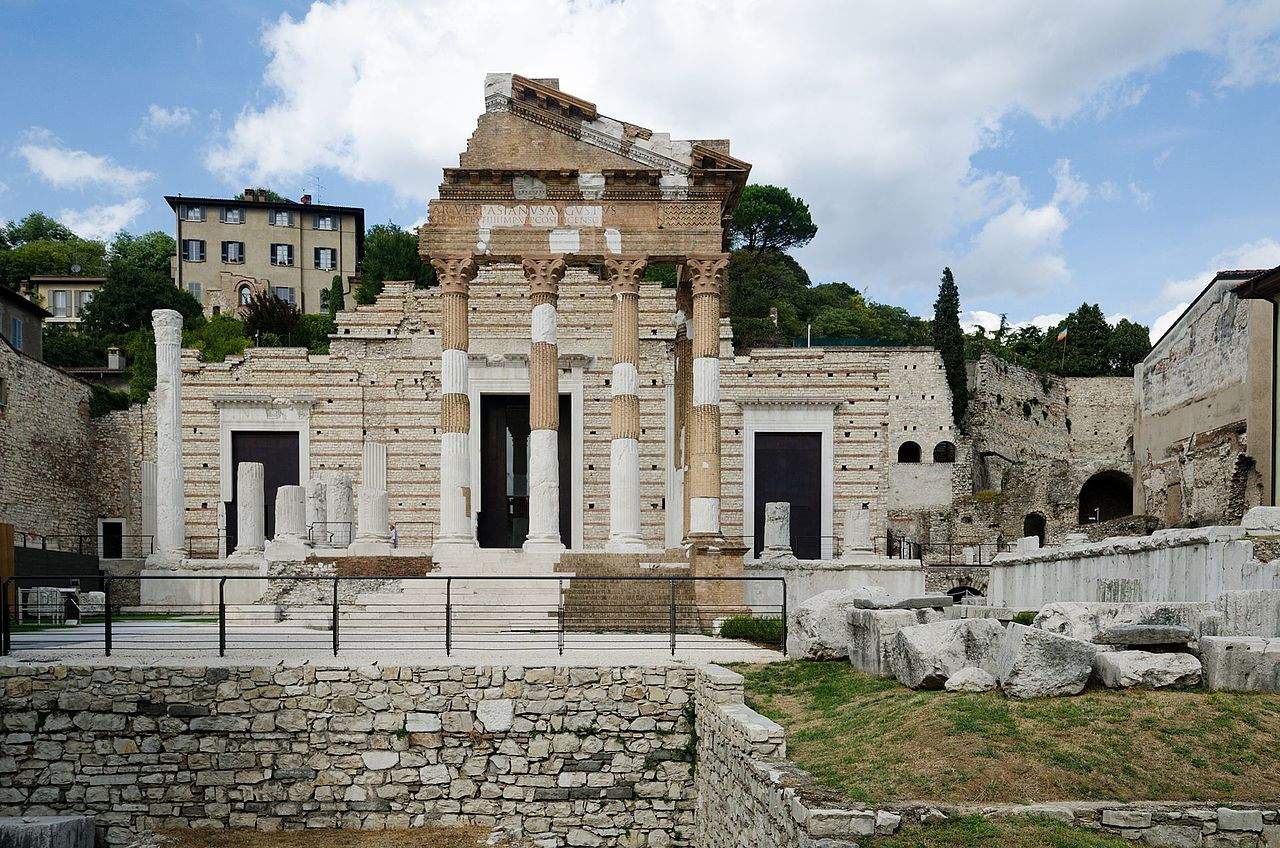 |
| Roman forum of Brescia. Photo: Xiquinho Silva |
Perhaps not everyone knows which is the first archaeological park in Italy: it is precisely the National Park of Rock Engravings of Naquane, which holds the record, having been established in 1955 with the aim of protecting and enhancing the complex of prehistoric and protohistoric engravings in Val Camonica. But that’s not all: the rock engravings of Val Camonica also have another primacy, because they are the first Italian site to have been included in the UNESCO World Heritage List, even before Rome, Florence, Venice, Piazza dei Miracoli in Pisa, and Leonardo da Vinci’s Last Supper: it was 1979 when the engravings were included in the list. In all, there are eight parks dedicated to this heritage, but that of Naquane is, as mentioned, the first ever: it is located in the hamlet of Naquane, in the municipality of Capo di Ponte, along the state road leading to Adamello, the main peak of the Brescian Alps. The park, which covers an area of more than 140,000 square meters, protects a complex of 104 engraved rocks. It is an art form that developed in Val Camonica between the end of the Upper Paleolithic and the Iron Age, that is, between about 13,000 and 10,000 years ago until the first millennium before Christ, but continued even later; there are even engravings from modern times (some of them of Christian origin). The site today is managed by the Ministry of Culture.
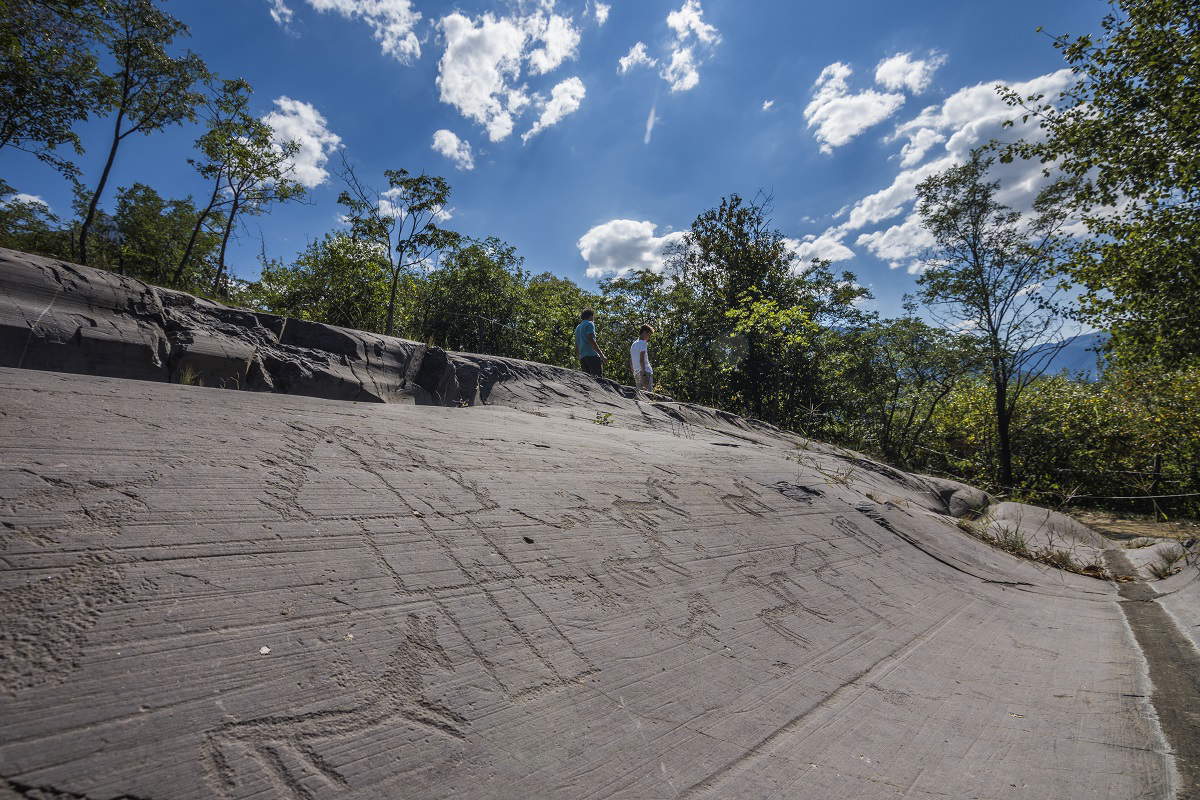 |
| Naquane Rock Engravings National Park. Photo: Brescia Tourism |
This is one of the most famous and visited archaeological areas in all of Italy: the name by which this complex is known (the term is first attested in the 15th century), however, is misleading, because this archaeological site has nothing to do with caverns, caves or the like. On the contrary: it is a sumptuous Roman villa standing on the tip of the Sirmione promontory overlooking Lake Garda. The building phases of the complex range from the end of the 1st century BC to the beginning of the 1st century AD (while it was abandoned in the 3rd century): the size (an area of two hectares) and complexity of the structure make it one of the most important residential villas in northern Italy. It was discovered in the 15th century, and the reference to Catullus (who did not live in this villa) is simply due to the well-known verses with which the great Latin poet sang about the marvelous Garda location. However, it was not until the mid-19th century that the site was excavated, although studies accelerated after the war, starting in 1947, after the area became public property. Rectangular in plan (remarkable in size: 167 x 105 meters, with two foreparts on the short sides, those to the north and south), it also had baths, gardens with pathways, and porticoes. There was also a staircase that provided access to the beach on the lake. After abandonment it was used as a quarry and as a strategic outpost to control the lake. Today it is an archaeological site visited by tens of thousands of people each year.
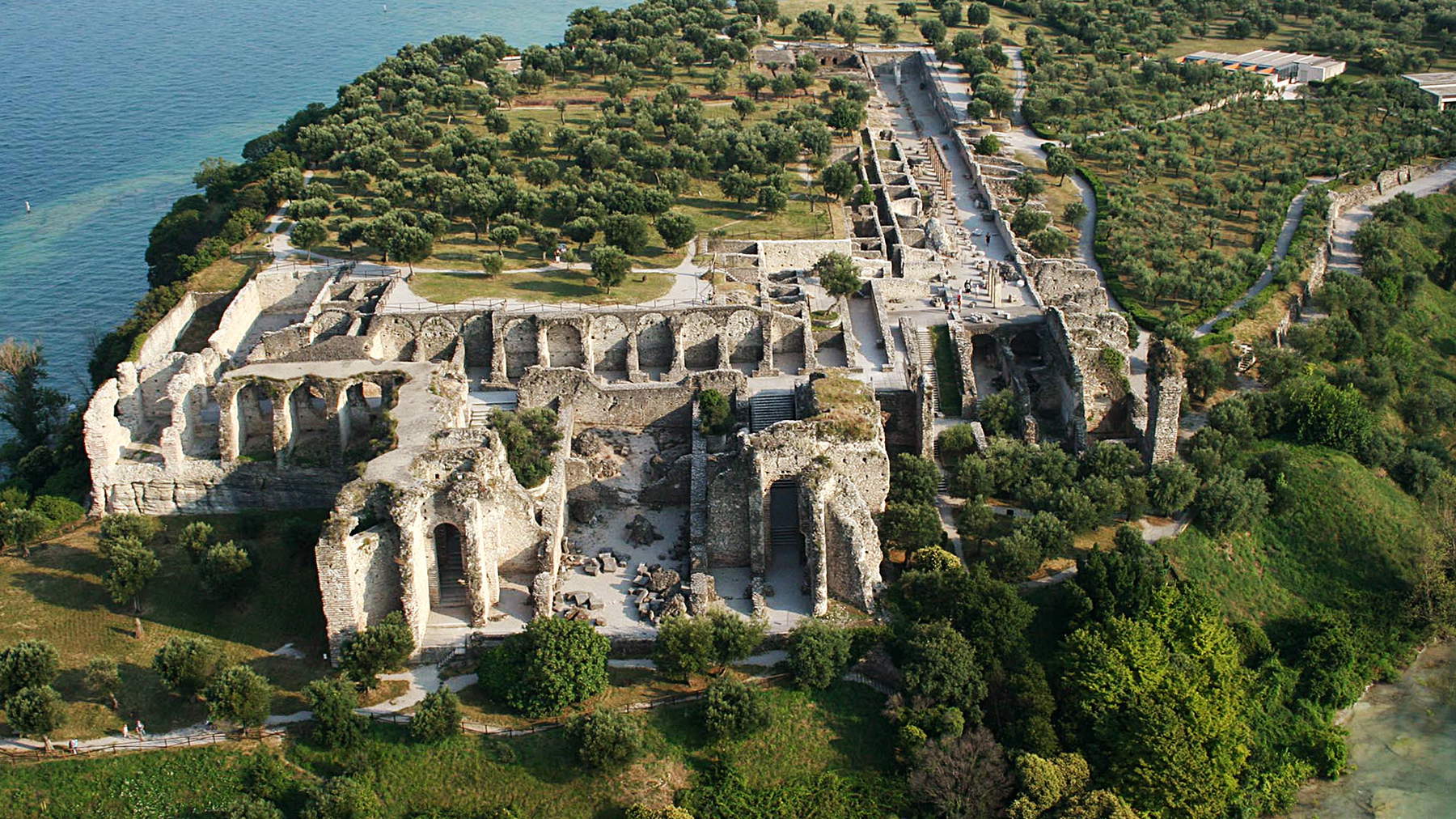 |
| Caves of Catullus. Photo: Polo Museale della Lombardia |
Another villa of considerable size, it was discovered in 1921 during earthworks in preparation for the construction of a house: interesting polychrome mosaics emerged, which later led to the discovery of the rest of the structure. The Roman villa at Desenzano del Garda is located a short distance from the lake (it originally faced directly onto it) and is another complex built in several phases, between the end of the 1st century BC and the 5th century AD. It was located just north of the Via Gallica and is considered the most important example in northern Italy of the late antique villae. It is a complex occupying 11,000 square meters and was also equipped with a bathhouse, as well as rustic buildings and others of course for residential purposes.It is assumed that the owner of the villa, for a certain period of history, was Flavius Magnus Decentius, brother of the emperor Magnentius who reigned between 350 and 353, and from whom the present name of the city of Desenzano is derived. The villa is also known for its magnificent mosaics, many of them with mythological themes. An Antiquarium has since been built near the villa, preserving the most important artifacts that were found in the structure.The villa’s website offers all the information on how to visit, and also a downloadable guidebook.
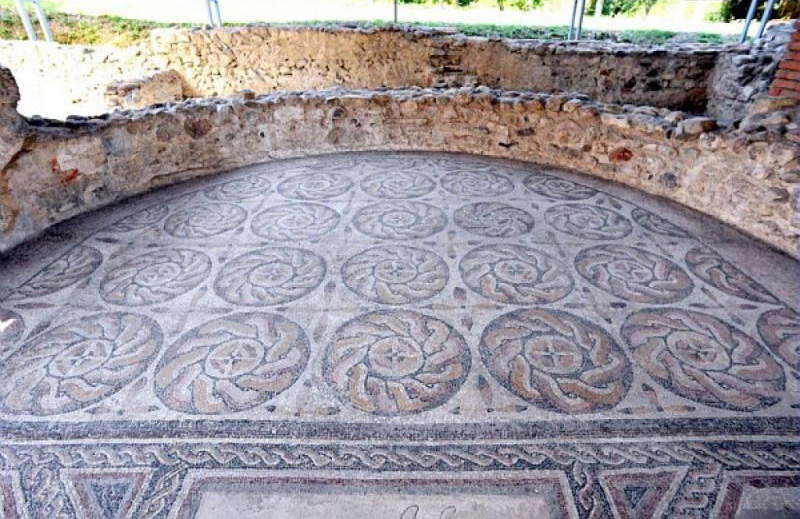 |
| Roman villa of Desenzano del Garda. Photo: Polo Museale della Lombardia |
Another site on Lake Garda, it was discovered relatively recently, thanks to some archaeological excavations carried out between 1985 and 1988 in Lonato del Garda. It is a vast artisanal complex from the Roman period (from the finds it was possible to date it to a period ranging from the first half of the 1st century to the beginning of the 2nd century) consisting of six large vertical furnaces, two of them circular and four square or rectangular, accompanied by the remains of some buildings that were used for manufacturing activities: bricks, tiles, and embrici were produced there, thus building materials, but also ceramics for domestic use. The discovery, in 2002, of two other furnaces not far away (of a much later period, however: they are medieval, from the 14th century) confirmed that even in ancient times that this area of Lake Garda was an intense production area. The only furnace that can be visited today is “Furnace A,” which is also the best preserved (and is also one of two with a circular plan). The combustion chamber was underground, and above it rose the firing chamber, enclosed at the top by a cover (which has not been preserved) that was probably disassembled and reassembled periodically. Today the Roman Furnaces of Lonato is a visitable site that is also notable for its intense educational activity.
 |
| Roman Furnaces of Lonato. Photo: Furnaces of Lonato |
The Etruscans had also arrived in northern Italy, and by visiting the Forcello Archaeological Park in Bagnolo San Vito, not far from Mantua, one can discover all about this presence. In fact, traces of an Etruscan settlement were discovered in this locality in the 1960s, thanks to the discovery of inscriptions in the Tyrrhenian language. Since 1981, the University of Milan has conducted numerous excavations in the area, bringing to the surface a settlement characterized by a complex stratigraphic sequence (in fact, nine settlement phases have been identified). It was a settlement built near the Po River, and thus had a strategic commercial importance, also confirmed by the discovery of remains of Greek and Alpine-made objects, a sign that trade in goods from different places passed through these parts: competition from nearby Mantua and some invasions, however, determined the abandonment of the site as early as the 4th century BC. However, Forcello is considered the most important Etruscan settlement in the Lombard area between the 6th and 5th centuries BC, and also marks the northernmost point of expansion of the Etruscans in the Archaic period. The very active Forcello Archaeological Park also provides a rich website where much information can be learned about the presence of the Etruscans in the Po Valley area.
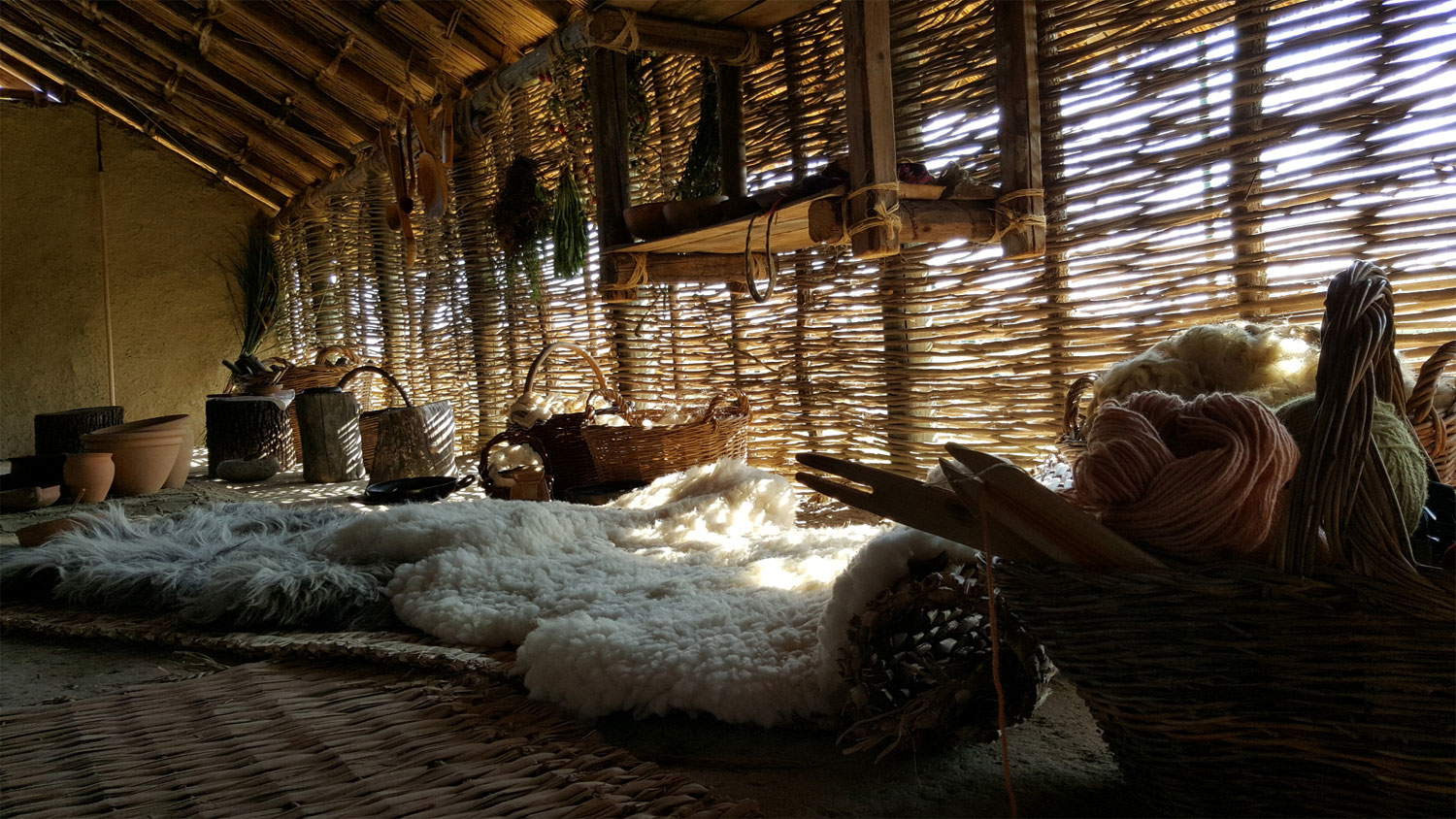 |
| Forcello Archaeological Park. Photo: Forcello Archaeological Park. |
Officially, its name is a bit longer: “Parra Oppidum degli Orobi Archaeological Park and Antiquarium.” It is located in Parre, in the Seriana Valley, and is one of the most important sites in pre-Alpine Lombardy, because ancient Parra (now, indeed, Parre) was the main center of the Orobi, a population that inhabited the valleys of the Bergamo area during prehistoric times. The recently opened Park (in fact, it was inaugurated by the Municipality of Parre on September 28, 2013) was established to protect and enhance what remains of the site: ancient Parra was founded near some mines and the population specialized in the lvoration of metals. Remains of Roman-era dwellings can still be seen at the site, as well as some earlier structures (from the Iron Age), all of which were built according to the “alpine house” model, i.e., with a square plan, stone perimeter walls and sunken, and on which a wooden raised floor was built, then covered with a roof that was itself made of wood, or thatched. Near the Park it is also possible to visit the Antiquarium, which collects various artifacts useful for understanding many aspects of the daily life of the Orobians. For all information you can visit the website of the Oppidum of the Orobians.
 |
| Oppidum of the Orobians. Photo: Oppidum of the Orobians. Photo: Oppidum of the Orobians. |
In the town of Palazzo Pignano, near Crema, traces of an important archaeological site characterized by complex stratification had already been found in the seventeenth century. However, it was not until the 1960s that the area was studied in depth, and it was thus possible to discover that a Romanesque parish church had been built in Palazzo Pignano in ancient times on the remains of an even older, 5th-century church, because not far from this area stood a Roman-era complex that was later found to be a sumptuous villa, still only partially investigated today: however, it is an important structure, distinguished by its fine mosaics and colorful walls, as well as an octagonal garden that in ancient times was probably decorated with statues. The villa of Palazzo Pignano, which also had a palatine chapel, has been identified as one of the most luxurious villas in northern Italy of the imperial age (the villa is from the 3rd-4th centuries): it is possible that it was the pleasure residence of some important and wealthy personage who lived in Milan. In the archaeological area it is also possible to see the remains of the ancient 5th-century church, as well as to visit the Antiquarium, which tells the history of the place. For more information you can visit the website of the archaeological area.
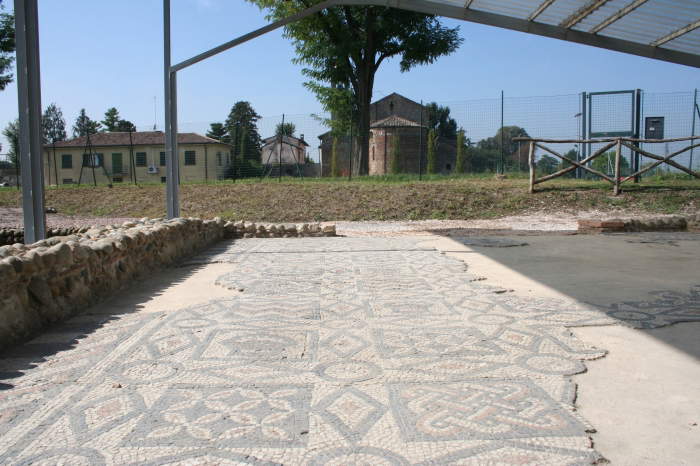 |
| Archaeological area of Palazzo Pignano. Photo: Municipality of Palazzo Pignano |
Step back into prehistory to learn about one of the most spectacular archaeological sites in Lombardy, the National Archaeological Park of the Massi di Cemmo, so called because it stands in the area of Pian delle Greppe around two large boulders that, at the beginning of the Holocene (i.e., almost 12,000 years ago), collapsed from the mountain above and were decorated with rock engravings by the local inhabitants. The site was so important that, beginning in the Copper Age (3rd millennium B.C.), a shrine sprang up around the boulders, as evidenced by plow furrows discovered not far away, which most likely marked the sacred site. The sanctuary was later also provided with a surrounding wall, and in Roman times a road was built leading to it.The sacred place was later dismantled in Christian times (between the 4th and 11th centuries), during the struggles against idolatry, because even during the Middle Ages the site was used for the celebration of pagan rites. Its importance is also due to the fact that it is the first rock art site in Val Camonica to have been discovered: it was 1909, and it was geographer Gualtiero Laeng who noticed the presence of these engraved boulders. Instead, the Archaeological Park was inaugurated in October 2005, but a state-owned area had already been established since 1964 with the aim of protecting this extraordinary heritage.
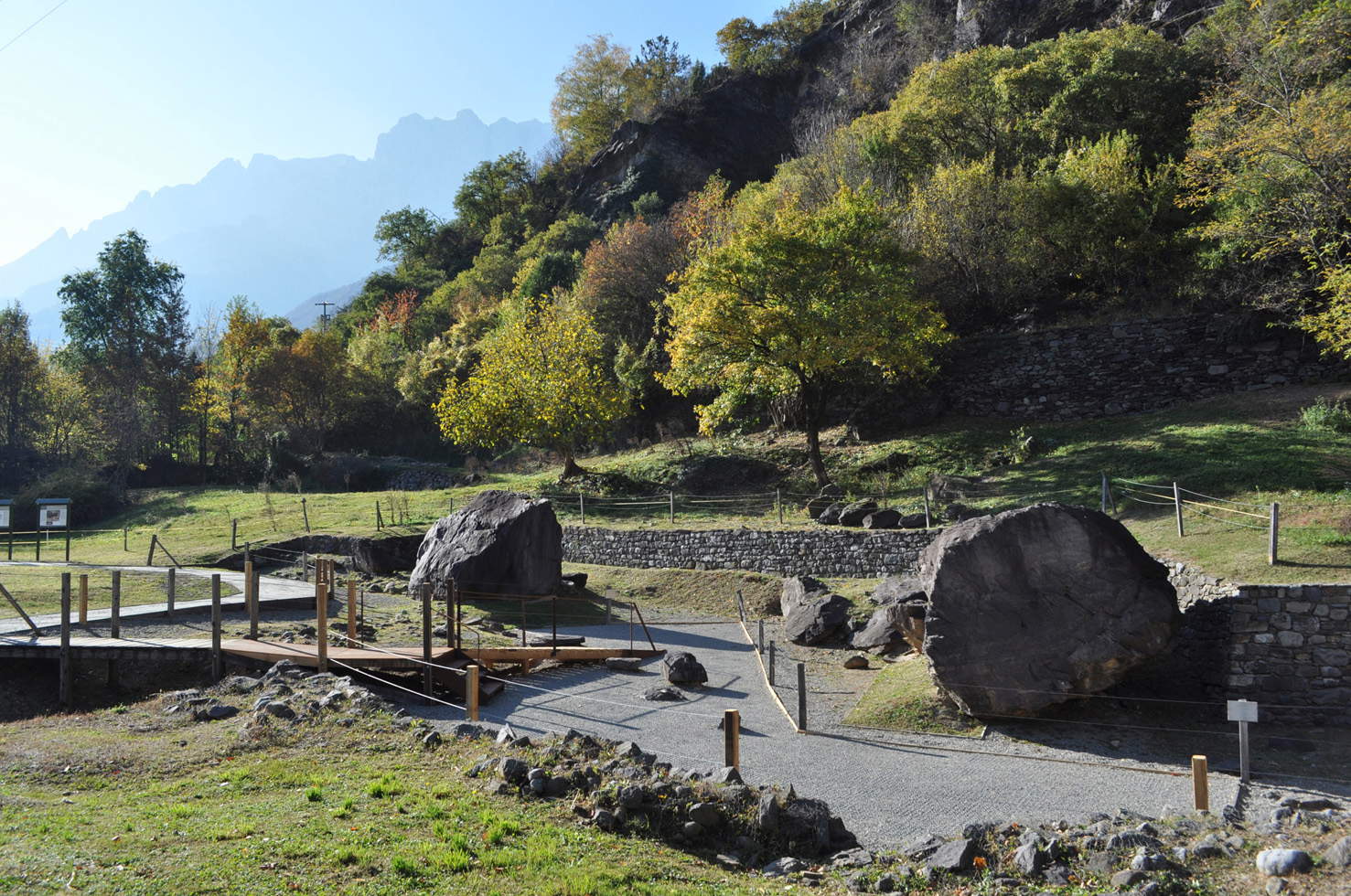 |
| Massi di Cemmo National Archaeological Park. Photo: Ministry of Culture |
From prehistory the journey ends in the Middle Ages at Castelseprio, near Varese, where the local Archaeological Park protects the remains from the ancient fortified settlement (a castrum) that developed from the fifth century on the remains of a fourth-century military site. Within the Park, the remains of the ancient buildings are visited: the military structures, the basilica complex of St. John the Evangelist (a large three-aisled basilica), the smaller church of St. Paul, the monastery of St. John that now houses the Antiquarium, and the remains of the village that are nestled in a forest. Finally, of great significance is the church of Santa Maria Foris Portas, which in contrast to the other houses of worship has been well preserved, despite being the oldest house of worship in Castelseprio, thus well surviving the abandonment of the village. Inside are some extraordinary and celebrated 6th-7th century frescoes that represent one of the most important cycles of early medieval Europe. The church has been on the World Heritage List since 2011, as part of the site “Lombards in Italy: places of power.”
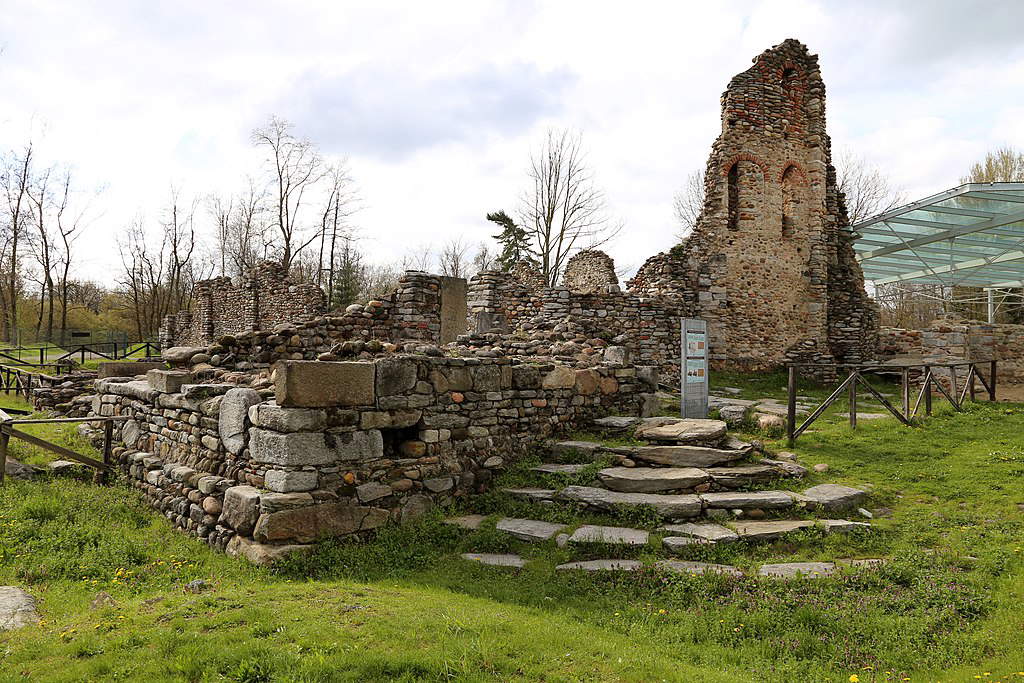 |
| Castelseprio Archaeological Park. Photo: Francesco Bini |
 |
| Ten archaeological areas and parks to see in Lombardy |
Warning: the translation into English of the original Italian article was created using automatic tools. We undertake to review all articles, but we do not guarantee the total absence of inaccuracies in the translation due to the program. You can find the original by clicking on the ITA button. If you find any mistake,please contact us.